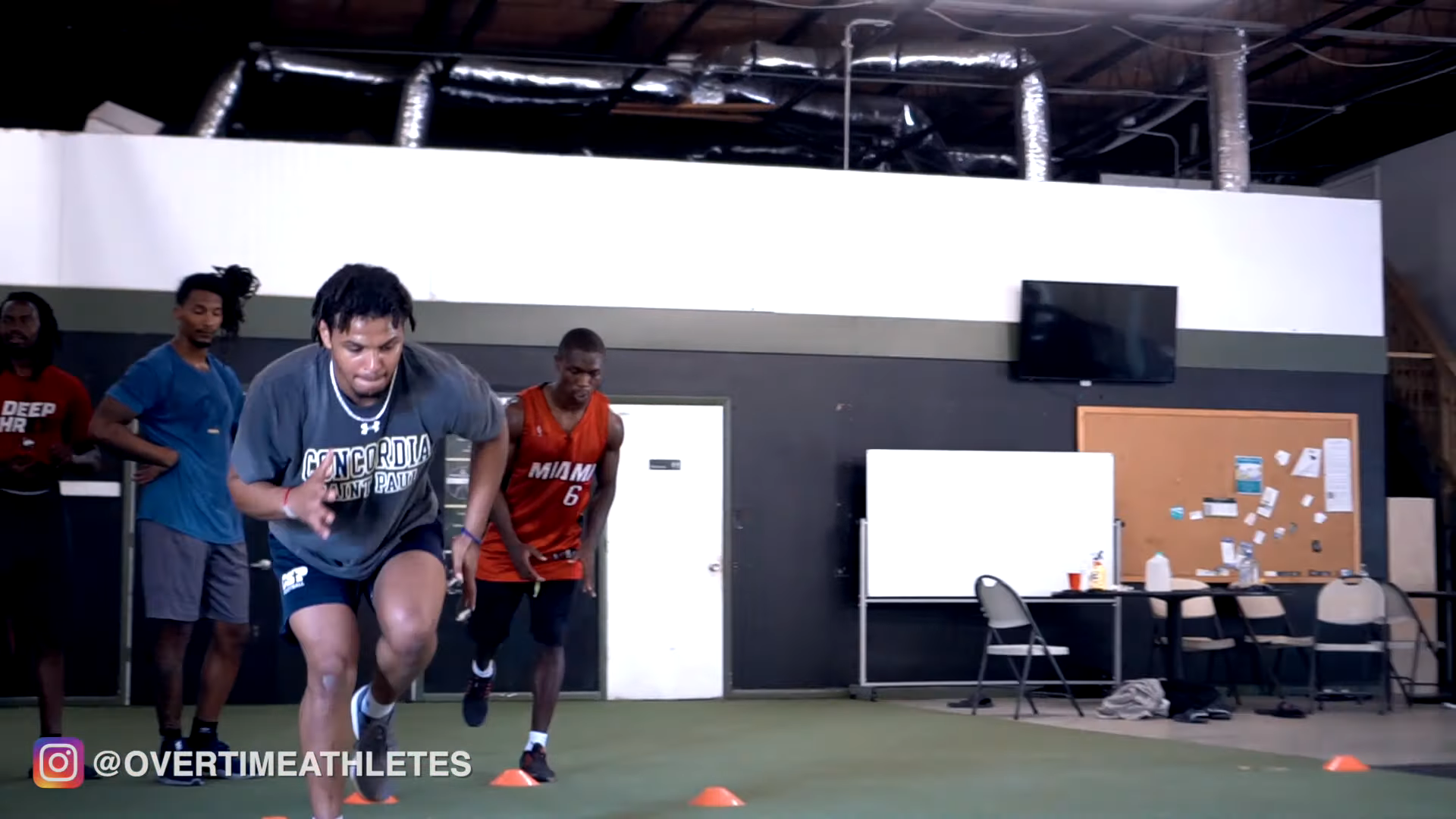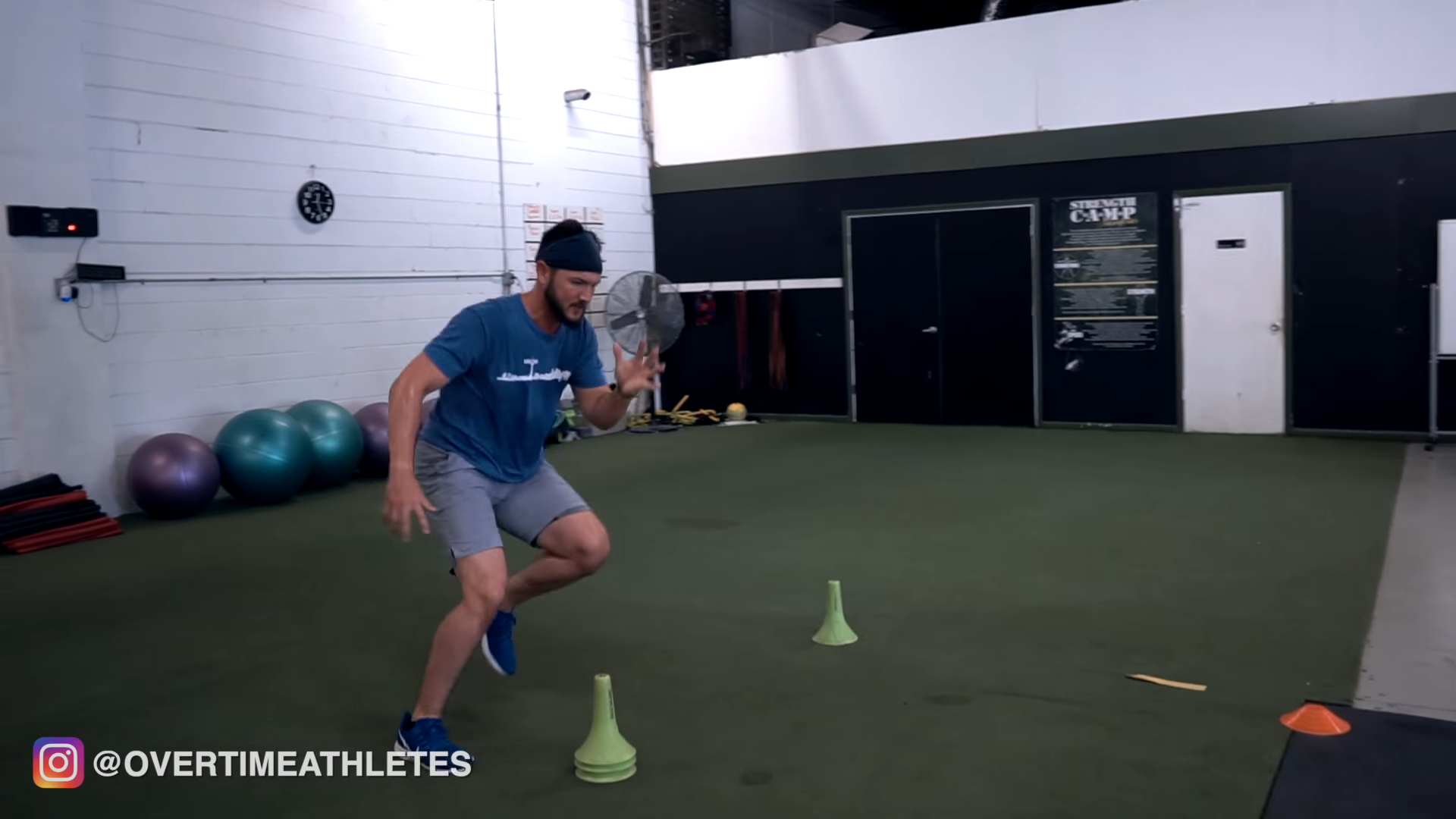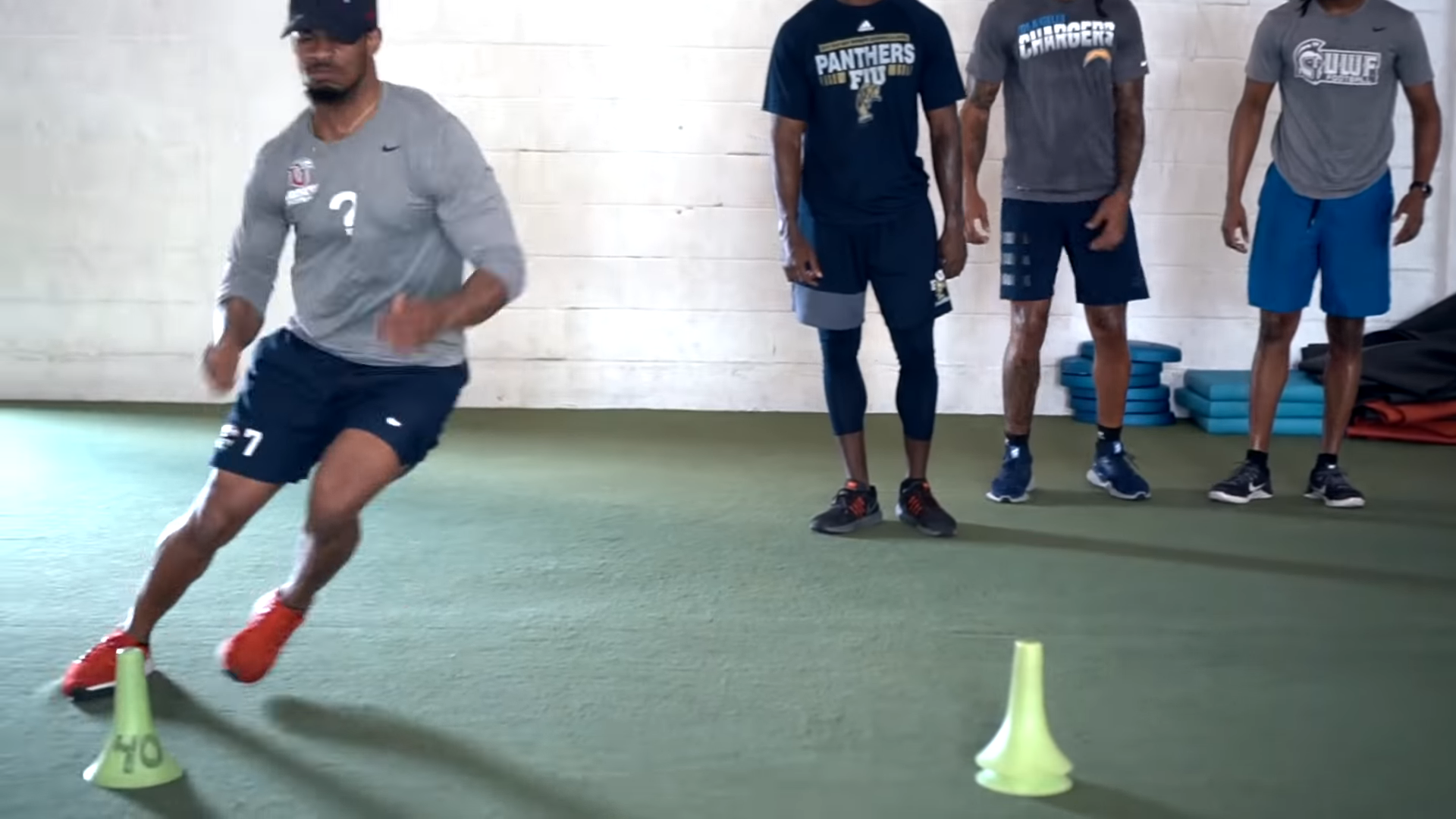Change of Direction, Speed, and Power Workout for Athletes

The other week I had the privilege of training a group of ELITE football athletes. This is the EXACT change of direction, speed, and power workout I put them through. While I don’t recommend performing this program if you’re a beginner, it can have an explosive impact on your athleticism. Check it out:
Lateral Pogo’s 2×10 Yards Each
Lateral Pogo’s build the lateral force production capacity of the ankle. This movement requires inversion of the lead ankle and eversion of the back ankle. It teaches the ankle to produce power in these positions. Two facing one way and two facing the other to get the stimulus for both ankles.
Lateral Power Steps 2x 15 Yards Each
This is a low-level change of direction plyometric that works hip abduction/adduction and builds the lateral power capacity of the rear leg. Make sure you’re actually pushing the ground away with your back leg, not just reaching with the front. Perform two sets on each side of 15 yards each.
Carioca Quick Step 2×10 Yards Each
The Carioca Quick Step is another low-level change of direction plyometric that works the rear leg’s lateral power capacity. You want to ensure that when you perform this movement, your toes stay square to the outside. As you pop the back thigh, let the back foot drop in front of the front leg, then push off. That’s how you extract the most benefit from this movement.
Crossover Run 2×10 Yards Each
The Crossover Run can be used as a sport specific movement. It can also be used as a building block for agility. When you perform this movement, make sure that your torso and hips stay square to the outside.
Lateral Shuffle to Sprint 2×10 Yards Each
For the Lateral Shuffle to Sprint, you’re going to jump out 5 yards with a lateral shuffle and quickly transition into a 5 yard hard sprint. Make sure when you transition from your lateral shuffle to your sprint you get your shoulders out in front. This will help you build speed quickly.
Single Leg Broad to 90 4×1 Each
Now we’re moving up to more advanced change of direction plyometrics. This movement has you jumping out with a sub-maximal single leg broad, and quickly transferring that forward momentum laterally. A few key points are to keep your core tight, spend as little time on the ground as possible, and land on two feet.
Lateral To Forward Broad 4×1 Each
Same movement as the last one except we’re flip flopping. This time, you’ll start with a big, lateral jump, then QUICKLY transition into a maximum effort single leg broad jump. Again, keep your core tight and spend as little time on the ground as possible.
Jump Cut 4×1 Each
The Jump Cut drill combines key points from the previous two drills. This time, you’re going to hop step horizontally, then quickly transition to a lateral hop step. Finally, you’ll plant and explode forward into a single leg broad jump, landing on two legs.
Alternating Bounds 3×10 Yards
The goal with alternating bounds is body control, as well as vertical, horizontal, and lateral power. You’ll start on one leg with the opposite hand in the dirt. Jump straight out of that position, getting up and out as high and far as you can, landing at another cone. Continue this for 10 yards.
Ascending V-Jumps 4×1
Ascending V-Jumps are similar to alternating bounds. This time, though, you won’t have your hand in the dirt, and the distance between the cones will gradually increase. Your first jumps will be vertically focused. As the distance between the cones increases, you’ll gradually incorporate more horizontal and lateral power.
A. Trap Bar Deadlift Jumps 5×3
Trap Bar Deadlift Jumps are simply a resisted plyometric. They’re less power and more speed-strength due to the high amount of resistance. When you perform these, make sure you come to a dead stop after each jump, careful not to let the bounce of the plates assist you in your jump.
B. Triple Broad Jump 5×1
We’re going to superset the trap bar deadlift jumps with a triple broad jump. The triple broad jump works on your transition as well as maximal horizontal power. Make sure to keep the time in between jumps as short as possible. Your first two jumps should be sub-maximal as you build momentum for an EXPLOSIVE last jump.
-
 5 Ways to Become a Better Athlete At Home April 14, 2020
5 Ways to Become a Better Athlete At Home April 14, 2020 -
 3 Sprinting Mistakes that DRAIN Your Speed April 7, 2020
3 Sprinting Mistakes that DRAIN Your Speed April 7, 2020 -

-
 Power and Mechanics Drills to Sprint Faster March 26, 2020
Power and Mechanics Drills to Sprint Faster March 26, 2020 -
 Vertical Jump Training At Home Workout March 24, 2020
Vertical Jump Training At Home Workout March 24, 2020




